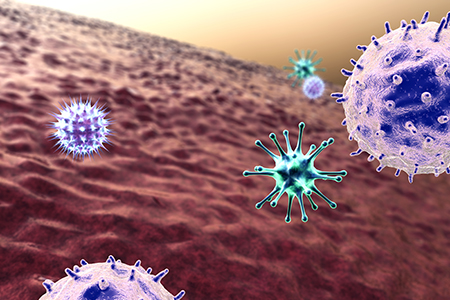 Humanized mice are invaluable tools for studying the function of the human immune system in an in vivo context, with applications for studying infectious disease, immuno-oncology, and immunology. Recently, Ryoji Ito and colleagues at the Central Institute for Experimental Animals in Japan demonstrated their efficacy in assessing the safety of chemotherapeutic drug candidates1.
Humanized mice are invaluable tools for studying the function of the human immune system in an in vivo context, with applications for studying infectious disease, immuno-oncology, and immunology. Recently, Ryoji Ito and colleagues at the Central Institute for Experimental Animals in Japan demonstrated their efficacy in assessing the safety of chemotherapeutic drug candidates1.
Humanized Mice and Myelotoxicity Testing
Myelotoxicity is a common treatment-related adverse effect for antineoplastic chemotherapies, and the maximum tolerated dosage of these drug candidates is a major factor for the successful development of novel therapies.This maximum dosage must be determined prior to initiating Phase I clinical trials, but mouse hematopoietic progenitor cells often show a different sensitivity to chemotherapeutic agents as compared to human cells. For example, mouse cells are more sensitive to oxaliplatin, whereas human cells are more sensitive to topotecan.
To overcome this, researchers have relied on an in vitro proxy assay to determine the relative differences between human vs. mouse bone marrow cells. However, this assay does not recapitulate the intricacies of hematopoiesis in vivo, nor does it replace in vivo testing in mice.
A Novel In Vivo Myelotoxicity Assay
To overcome these limitations, Ito, et al. developed a novel in vivo myelotoxicity assay using hGM-CSF/hIL3 transgenic NOG mice humanized with cord blood derived CD34+ cells (huNOG-EXL). Since huNOG-EXL mice support the long-term engraftment and development of multiple human lymphoid and myeloid lineages, they provide an ideal tool to determine how drug candidates affect human hematopoiesis in vivo.The authors showed that this model accurately predicted the sensitivities of human and mouse hematopoietic cells to oxilplatin, topetecan, and paclitaxel. Furthermore, these drugs had lineage-specific toxicities, each differentially affecting human (hCD66b+) vs. mouse (mGr1+) neutrophils.
This type of lineage-specific toxicity cannot be determined using in vitro assays, such as the colony-forming unit granulocyte/macrophage (CFU-GM) assay. Thus, huNOG-EXL mice are a valuable model with which to study the safety of chemotherapeutic drug candidates.
Humanized Mice in Preclinical Toxicity Testing
Applications for humanized mice in preclinical toxicology testing are gaining traction, in particular for hematoxicity and cytokine release syndrome. Studies have shown that these types of models can provide invaluable safety profiles for chemicals2 and multiple drug classes3-5, including therapeutic monoclonal and bispecific therapeutic antibodies4,5.While adding numerous benefits over in vitro assays, the toxicology applications for humanized mice also present an opportunity to reduce or replace primate usage in preclinical evaluations (e.g. cynomolgus monkeys used in safety assessments for novel biologics).
The growth in our understanding and application of humanized models, such as huNOG and huNOG-EXL, has opened opportunities to study the human immune system in increasingly complex ways. Toxicology now joins the fields of infectious disease and immuno-oncology in benefiting from the power of humanized mice.
- Humanized Mice in Preclinical Immuno-Oncology - Part I
- br clear="all">






.jpg)

.jpg)
.jpg)
.jpg)
.jpg)





.jpg)
.jpg)


.jpg)



.jpg)




.jpg)

.jpg)
.jpg)




